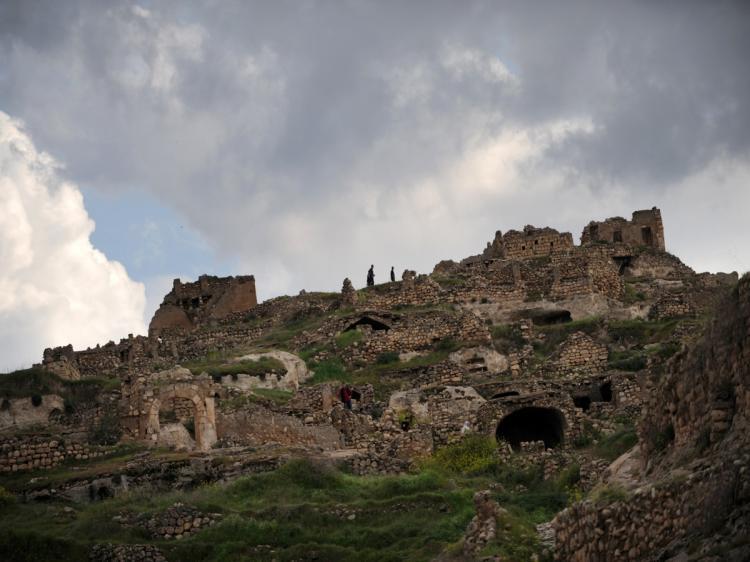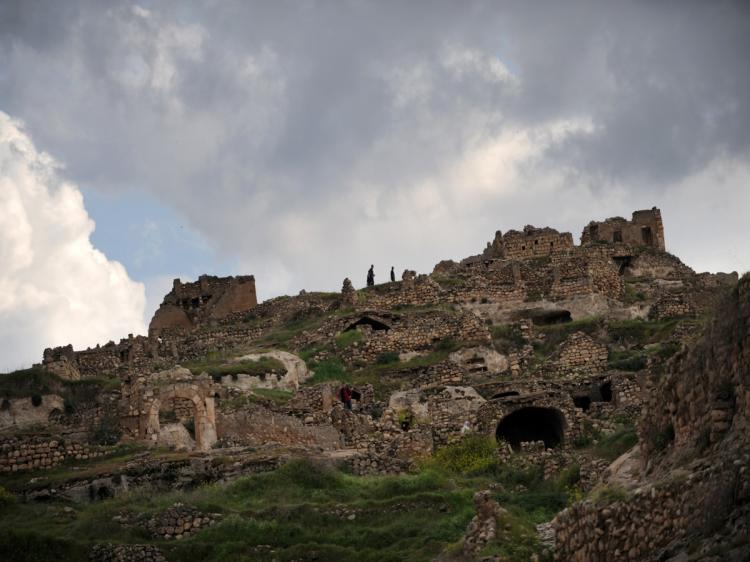Dams lead to social and environmental problems that potentially affect an estimated 472 million people worldwide, say researchers, in the first global estimate of the number of people potentially affected by dam-induced changes.
The Nature Conservancy and partners recently published their findings in a report called “Lost in Development’s Shadow: The Downstream Human Consequences of Dams.”
Prior to this report, there had only been estimates of people directly displaced by dams. In 2000, the World Commission on Dams estimated that 40 million to 80 million people in the world are displaced because of dam construction.
“Less attention has been given, however, to populations living downstream of dams whose livelihoods have been affected by dam-induced alterations of river flows,” researchers wrote in the report “Lost in Development’s Shadow: The Downstream Human Consequences of Dams.”
“Fresh attention to these downstream dam impacts is overdue and urgently needed.”
According to the study, dams change a river’s natural flow patterns, block movements of fish, and disrupt riverine production systems including fisheries, flood-recession agriculture, and dry-season grazing.
In Thailand’s Mun River, for example, the Pak Mun Dam caused fish catches to decrease by 60 percent-80 percent, and 50 fish species have disappeared since its construction, says the “Lost in Development’s Shadow” report.
By creating a database to document dam effects on people living along 120 rivers in 70 countries, and conducting case studies and spatial analysis, the researchers concluded that 472 million people living downstream of dams are potentially impacted negatively.
Patricia Adams, executive director of Probe International, an international environmental organization, has visited communities in China, Thailand, and North America that are in close contact with dams. “It’s a repeated tragedy with every dam I’ve examined,” Adams said.
“Dams are very expensive ways to generate electricity, they do not successfully control floods and produce problems that are extremely large,” she said.
Tragedies like forced resettling or cutting off a source of fish, which for some is the only source of protein, are some of the examples Adams recalls from her visits. In China, upward of 1.24 million people, according to Probe, were resettled along the Three Gorges Dam that tries to hold back the Yangtze River. Once resettled, they have to deal with adapting to new language, culture, and new ways of life.
“It is unacceptable that half a billion people have been essentially ignored,” said Dr. Thayer Scudder of the California Institute of Technology in a press release, one of the authors of the study.
“At least that many have seen their lives adversely affected by large dams that were planned and built without sufficient concern for those living downstream. If the full scope of potential economic and personal costs of proposed new dams were calculated, fewer would be built,” says Scudder.
“Our conservative estimate of 472 million river-dependent people living downstream of large dams along impacted river reaches lends urgency to the need for more comprehensive assessments of dam costs and benefits, as well as to the social inequities between dam beneficiaries and those potentially disadvantaged by dam projects,” according to the research.
Solutions proposed in the research to reduce impact of dams, include dam planning at a river-basin scale to ensure adequate evaluation of the dam’s impact, incorporating designs that protect ecosystems to ensure there are enough water downstream for aquatic animals to survive, and employing additional health programs and local economic opportunities to minimize the impact on local residents’ living standards.
The Nature Conservancy and partners recently published their findings in a report called “Lost in Development’s Shadow: The Downstream Human Consequences of Dams.”
Prior to this report, there had only been estimates of people directly displaced by dams. In 2000, the World Commission on Dams estimated that 40 million to 80 million people in the world are displaced because of dam construction.
“Less attention has been given, however, to populations living downstream of dams whose livelihoods have been affected by dam-induced alterations of river flows,” researchers wrote in the report “Lost in Development’s Shadow: The Downstream Human Consequences of Dams.”
“Fresh attention to these downstream dam impacts is overdue and urgently needed.”
According to the study, dams change a river’s natural flow patterns, block movements of fish, and disrupt riverine production systems including fisheries, flood-recession agriculture, and dry-season grazing.
In Thailand’s Mun River, for example, the Pak Mun Dam caused fish catches to decrease by 60 percent-80 percent, and 50 fish species have disappeared since its construction, says the “Lost in Development’s Shadow” report.
By creating a database to document dam effects on people living along 120 rivers in 70 countries, and conducting case studies and spatial analysis, the researchers concluded that 472 million people living downstream of dams are potentially impacted negatively.
Patricia Adams, executive director of Probe International, an international environmental organization, has visited communities in China, Thailand, and North America that are in close contact with dams. “It’s a repeated tragedy with every dam I’ve examined,” Adams said.
“Dams are very expensive ways to generate electricity, they do not successfully control floods and produce problems that are extremely large,” she said.
Tragedies like forced resettling or cutting off a source of fish, which for some is the only source of protein, are some of the examples Adams recalls from her visits. In China, upward of 1.24 million people, according to Probe, were resettled along the Three Gorges Dam that tries to hold back the Yangtze River. Once resettled, they have to deal with adapting to new language, culture, and new ways of life.
“It is unacceptable that half a billion people have been essentially ignored,” said Dr. Thayer Scudder of the California Institute of Technology in a press release, one of the authors of the study.
“At least that many have seen their lives adversely affected by large dams that were planned and built without sufficient concern for those living downstream. If the full scope of potential economic and personal costs of proposed new dams were calculated, fewer would be built,” says Scudder.
“Our conservative estimate of 472 million river-dependent people living downstream of large dams along impacted river reaches lends urgency to the need for more comprehensive assessments of dam costs and benefits, as well as to the social inequities between dam beneficiaries and those potentially disadvantaged by dam projects,” according to the research.
Solutions proposed in the research to reduce impact of dams, include dam planning at a river-basin scale to ensure adequate evaluation of the dam’s impact, incorporating designs that protect ecosystems to ensure there are enough water downstream for aquatic animals to survive, and employing additional health programs and local economic opportunities to minimize the impact on local residents’ living standards.






